Among ancient masserie (fortified farmhouses), elegant villas, and villages frozen in time, there lies a silent world that speaks of history, memories, and social change. This world is that of urbex, or urban exploration — a practice that combines adventure, photography, historical research, and a deep respect for forgotten cultural heritage.
The allure of urbex comes from the contrast between decay and beauty: deserted buildings that tell the stories of those who once lived there, silent witnesses of distant eras, and traces left untouched by time.
In Salento, a land rich in historical layers, urbex takes on a unique meaning, becoming not only an aesthetic discovery but also a reflection on the present and the future.
What Urbex Is and How It Started
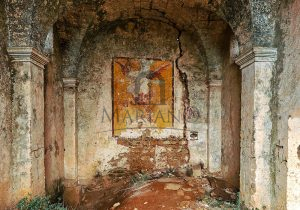 The word urbex comes from the English term urban exploration. It refers to the practice of exploring abandoned or otherwise inaccessible places: disused factories, old hospitals, deconsecrated churches, ruined historic villas, industrial buildings, forgotten theaters, and even entire villages.
The word urbex comes from the English term urban exploration. It refers to the practice of exploring abandoned or otherwise inaccessible places: disused factories, old hospitals, deconsecrated churches, ruined historic villas, industrial buildings, forgotten theaters, and even entire villages.
It’s not just about adventure — urbex is also a form of research and documentation.
Urbexers — as enthusiasts are called — take photographs, shoot videos, and tell stories, bringing fragments of collective memory back to light.
At the heart of urbex lies a fundamental rule: absolute respect for the location.
Nothing is taken, nothing is damaged, and nothing is left behind. The goal is to observe and bear witness, not to alter.
Urbex has deep roots: as early as the 19th century, there were individuals exploring hidden urban spaces, though the modern definition emerged in the 1970s and 1980s. With the rise of the internet and social media, urbex has spread globally.
Platforms like Instagram, YouTube, and specialized blogs have turned these explorations into visual storytelling, fostering communities of enthusiasts worldwide.
Urbex in Italy
Italy, with its vast historical and architectural heritage, offers countless opportunities for exploration.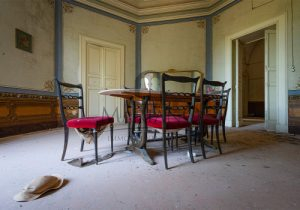
Crumbling noble villas, former industrial complexes, abandoned psychiatric hospitals, monasteries, castles, and even entire ghost towns — every region hides spaces suspended between past and present.
In Italy, urbex carries a unique layer of meaning. It’s not only about discovering forgotten places but also about reflecting on social and economic transformations.
Many urbex sites in Italy tell stories of emigration, changes in local industries, properties left without heirs, or public buildings abandoned due to economic crises or political decisions.
Urbex in Salento: Between Masserie, Noble Villas, and Ghost Villages
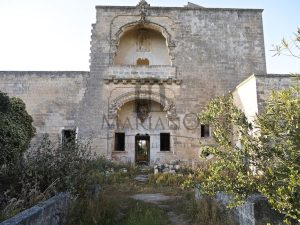 Salento, a land of crossroads and cultural exchanges, is a true paradise for urbex enthusiasts.
Salento, a land of crossroads and cultural exchanges, is a true paradise for urbex enthusiasts.
Here, abandonment takes on distinctive forms, often linked to rural history and the aristocratic life of the countryside.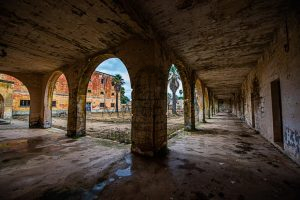
Some of the most common types of locations encountered during explorations include:
-
Fortified Masserie: ancient agricultural complexes, often built with defensive features, dating back as far as the 16th to 18th centuries. Many have been restored and transformed into tourist facilities, while others remain silent and untouched, with watchtowers and courtyards now overtaken by vegetation.
-
Noble Villas: the former summer residences of local aristocratic families, richly decorated and featuring gardens, private chapels, mosaic floors, and frescoes. Their abandonment creates hauntingly beautiful scenes, where art and decay coexist.
-
Ghost Villages: small towns that lost their populations due to emigration or economic shifts, now left deserted and frozen in time.
-
Deconsecrated Religious Buildings: private chapels, convents, and rural churches that are no longer in use, often still containing altars and original decorations.
Urbex Salento: Telling the Stories of Forgotten Places
 One of the most intriguing projects dedicated to urban exploration in the region is Urbex Salento, created in 2021 by Daniela Stabile, a passionate photographer and history enthusiast.
One of the most intriguing projects dedicated to urban exploration in the region is Urbex Salento, created in 2021 by Daniela Stabile, a passionate photographer and history enthusiast.
Her Instagram page serves as a visual diary where each photograph not only documents abandoned sites but also tells their stories, restoring dignity to what remains.
Daniela’s work goes beyond capturing evocative images. It is also a form of social commentary.
Each photographed place becomes an invitation to reflect on abandonment, degradation, and the urgent need for preservation and restoration.
As she explained in an interview with QuiSalento, for her, urbex is a way to preserve collective memory, giving a voice to places that might otherwise be lost to time.
Iconic Urbex Locations in Salento
Without revealing exact locations — to honor the urbex community’s code of protecting sites — here are some common types of places often explored in Salento: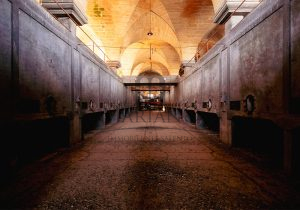
-
Old factories and tobacco warehouses: remnants of a once-thriving local industry, especially in the inland areas between Lecce and Maglie.
-
Noble villas along the Ionian and Adriatic coasts, built mostly between the 19th and early 20th centuries, featuring grand staircases, panoramic terraces, and rooms adorned with frescoes.
-
Fortified masserie in the Capo di Leuca area, particularly around Presicce, Ugento, and Patù, where you can still find traces of stables, underground olive oil mills (frantoi ipogei), and subterranean granaries.
-
Semi-abandoned villages, where a few houses are still inhabited while others stand empty, with doors ajar and furniture left untouched.
-
Private chapels hidden in the countryside, decorated with faded frescoes and altars carved from local pietra leccese limestone.
These locations hold immense historical and emotional value.
Exploring them becomes a journey through time, unveiling the rural life, aristocratic heritage, and social changes that have shaped the region.
Urbex as a Cultural Resource
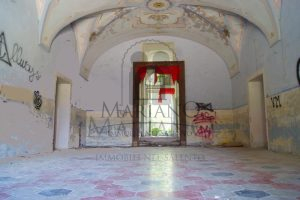 Urbex is more than just a personal passion — in Salento, it has the potential to become a cultural and tourism resource.
Urbex is more than just a personal passion — in Salento, it has the potential to become a cultural and tourism resource.
When managed responsibly and respectfully, it could give rise to sustainable tourism experiences that blend history, art, architecture, and storytelling. Some possibilities include:
-
Photography exhibitions dedicated to abandoned places, like those already held in some Salento towns.
-
Cultural events and guided itineraries that narrate the history of restored sites, transforming them into vibrant spaces for communities and visitors.
-
Urban regeneration projects, where forgotten buildings are reborn as cultural centers, museums, boutique accommodations, or community hubs.
Conclusion
Urbex encourages us to look beyond appearances, to discover the hidden beauty of abandoned places.
In Salento, this practice carries a special significance: it tells the story of a land rich in history, highlights the fragility of its cultural heritage, and sparks reflection on memory and collective identity.
Exploring, photographing, and sharing these places means preserving their memory — and perhaps laying the foundation for a future where abandonment can turn into revival.
In every broken window and every faded fresco lies a story worth listening to and sharing.



